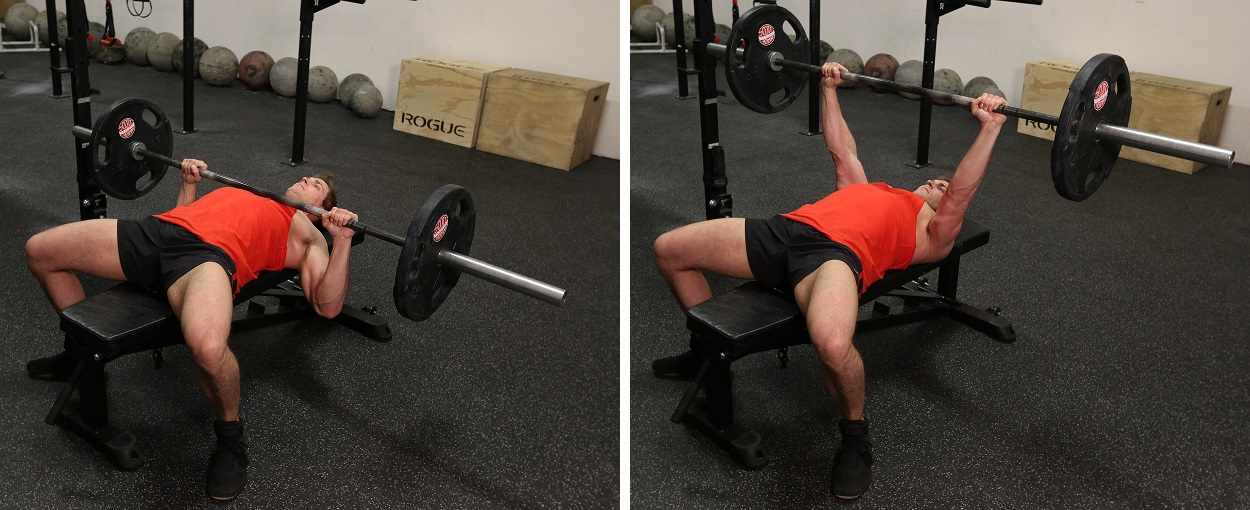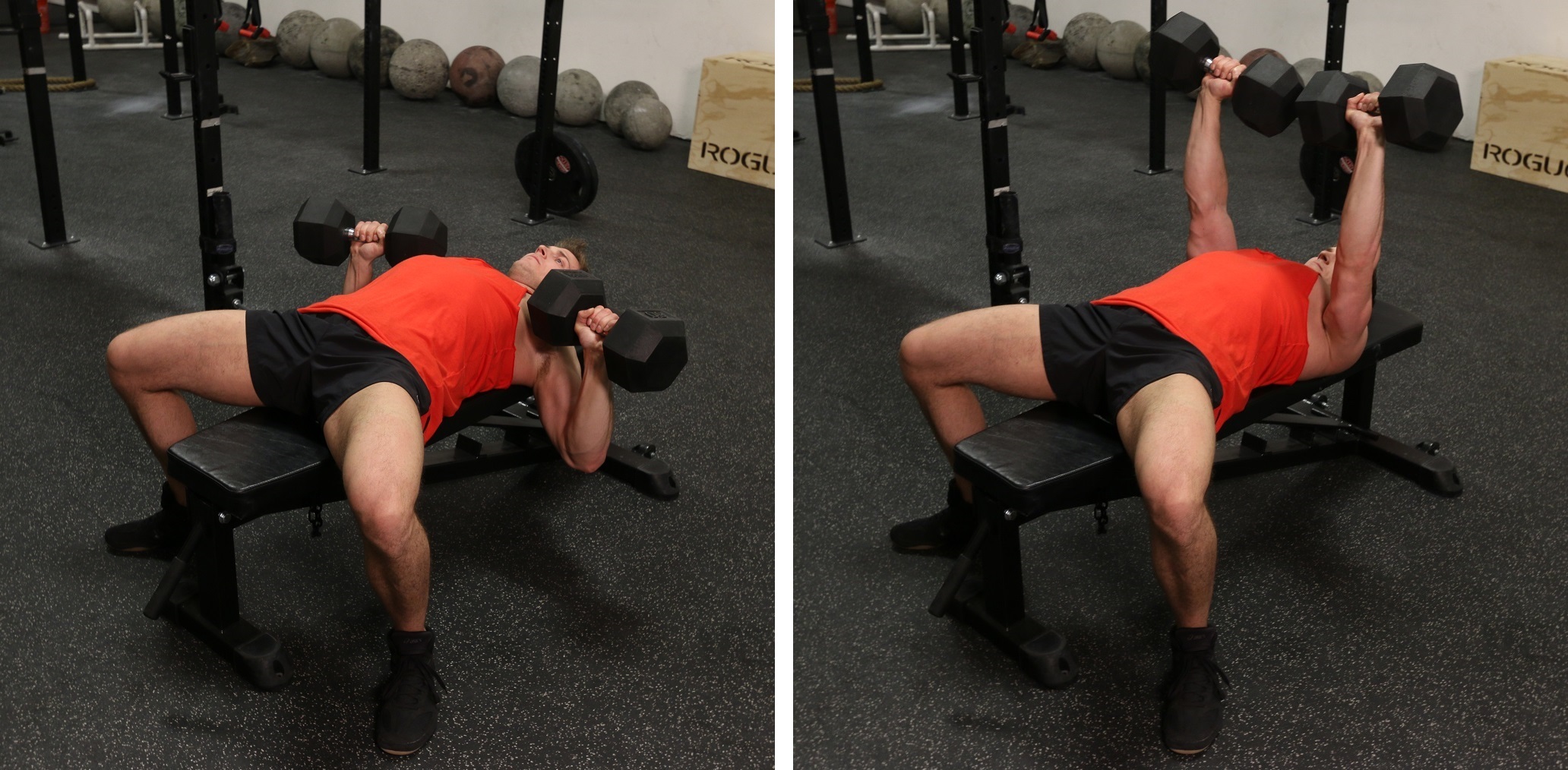Barbell Bench Press VS. Dumbbell Bench Press
Which Builds More Muscle?
Welcome to another episode of myVERSUS SERIES! Last time we compared the SUMO DEADLIFT VS CONVENTIAL DEADLIFT and after reading all your comments, next up is the barbell bench press vs dumbbell bench press to finally answer the question of “Which exercise builds more muscle?”
When it comes to building a massive ”full” chest, I highly doubt any of you care what exercise you need to do, or how much weight you need to lift, just as long as it works. For men, our chest is the first thing we want to go through the door when we enter a room because a massive chest displays power and confidence! Yes, genetics will play a role in the shape of your chest, but we can always work on enhancing the “size” of your pecs by training them properly.
But before we begin, let us talk about the pectoralis major and pectoralis minor. The pectoralis major is the large fan-shaped muscle covering the anterior rib cage. This muscle makes up the entire visible portion of your chest and is actually split into two parts, the clavicular head and the sternal head. The clavicular head is the smaller, upper portion of the pec major and originates on the anterior surface of the medial half of the clavicle and inserts on the lateral lip of the bicipital groove of the humerus and anterior lip of the deltoid tuberosity. The sternal head, which is the larger lower portion of the pec major, originates on the lateral aspects of the manubrium and body of the sternum, the upper six costal cartilages and the aponeurosis of external abdominal oblique.
The action of the pectoralis major as a whole, so both heads working together, is to adduct the arm and bring it medially across the chest, so think of a chest fly, as well as medially rotate the arm. The clavicular head flexes the arm and the sternal head extends it and extension of the arm by the sternal head can only occur if the arm is flexed; the sternal head cannot hyperextend the arm.
Now, the Pectoralis Minor is a small, triangular muscle, which lies beneath the pectoralis major. It originates from the anterior surface of the 3 - 5 ribs and inserts on the coracoid process of the scapula (which is where the short head of the bicep brachii originates, which we talked about in the dumbbell bicep curl vs the dumbbell hammer curl article). The function of the pectoralis minor is the depression and downward rotation of the scapula, which is another way to say roll your shoulders back and retract your scapula.
All bench press variations, which include the dumbbell bench press and the barbell bench press, work the pec major. This is because when you retract your shoulder blades, the pectoralis major is stretched and as your arms move closer to your center, the muscle shortens. Also, even though you may not feel them, stabilizers in the area are working just as hard as the pectoralis major. These stabilizers are your deltoids, rotator cuffs, spinal erectors and transverse abdominis, and they are activated to help maintain body stability and balance throughout the movement.
The Barbell Bench Press

Now that we have a better understanding of the pec major and pec minor, let us talk about the barbell bench press. The set-up for the exercise is to lie on a bench with your feet flat on the ground, knees pushed out and your shoulders retracted. To maximize your strength on your lift you will want to adjust your positioning on the bench so that you can arch your back while keeping your core tight and butt on the bench. Once in place you will then lift the barbell, typically with your hands slightly outside of shoulder width apart, and proceed to lower it to your sternum and then push through the movement with your arms while driving your feet into the ground to return the barbell back to the starting position.
But why is there so much set-up time for the barbell bench press? It is because the sole focus of this movement is to lift as much weight as possible. Of course you will also stimulate your chest for muscle growth, but there are some limiting factors here that you need to be aware of.
The first one is range of motion. When pressing a barbell, your hands are locked in a single position on the bar. Because they are locked in place, you are not able to move your arms throughout their full range of motion which will limit how far you can extend your arms at the top of the movement.
Next is maintaining muscular tension. Believe it or not, hand placement plays a huge role in the development of your chest during a barbell bench press. If you grab the barbell too wide, you will distribute muscular tension to other muscle groups outside the chest. It should be very obvious that in order to maximize your results, you want to keep as much muscular tension on your pecs as possible throughout the movement.
The last limiting factor is the development of muscle imbalances. Because you are pressing a single bar, it is possible for your dominant side to take over the movement resulting in one side working harder than the other.
The Dumbbell Bench Press

The dumbbell bench press is up next. To perform this movement you are going to follow all the same steps as the barbell bench press. Feet flat on ground, knees out, shoulders retracted, and butt glued to the bench while you arch your back. Once in place you are going to lower the dumbbells as far as you can and then push through your arms while driving your feet into the ground to press them back to the top of the movement.
So what is the difference between these two exercises? Let us take a look at range of motion first. Because there is no barbell keeping your hands fixed in one position you will not only be able to extend your arms more at the top of the movement, but you will be able to lower the dumbbells a bit more as well. This is because normally at the bottom of the movement the barbell would stop when it touches your chest, with dumbbells, you are limited only by your flexibility. Also, because you are increasing your range of motion you are allowing more muscle fiber activation thus increasing the muscular benefit from the movement.
When it comes muscular tension, since the dumbbell press allows for a greater range of motion, you have more control over the motion of your arms and can keep your movement more in front of your body. As mentioned before, a wide-grip on the barbell bench press takes tension off the pecs and applies it to surrounding outside muscles. But because you have more control with the dumbbells, this will allow you to keep more concentrated tension on your chest for a longer period of time.
We also talked about muscle imbalances with the barbell bench press because it is possible for you dominant side to take over during the movement. However, with the dumbbell press each arm moves independently to lift the weight and this allows each side to do equal work and develop equally as well.
Which Builds More Muscle?
As for the answer of which exercise builds more muscle, my choice would be the dumbbell bench press. When compared to the barbell bench press it is very clear that you are able to train in a greater range of motion and keep constant tension on the chest muscles. I would also like to note that there is no room for cheating with the dumbbell press. When using a barbell you can easily bounce the bar off your chest at the bottom of the movement which may give you a few more reps, but in terms of building muscle is useless as you are bouncing the weight to create movement, not engaging your chest muscles.
There are a few other benefits to the dumbbell press as well. For example, the only reason why the “set-up” process is so complicated for the barbell bench press, and by this I am talking about arching your back and driving through your feet, is because you are positioning your body to be able to lift as much weight as possible. But if the goal is purely muscle growth, these steps do not matter and you can actually lift your feet off the ground to enhance muscle fiber recruitment during the dumbbell press because this slight change produces a joint stress transfer in a positive way. What this means is that because you have removed all the stability that comes from keeping your feet planted on the ground, you are transferring more of the workload to your chest and stabilizers. Now what this also means is that you might have to use lighter weights to perform the movement, but if you have been paying attention you would know that the weight doesn’t matter when building muscle.
The biggest thing, aside from muscle stimulation, that you need to take away from this video is that if you are BODYBUILDING you are trying to train the MUSCLE and not the MOVEMENT. What I mean by this is that you are not powerlifting, so the goal is not to contort your body to find the best position to lift the most amount of weight possible. Your goal is to approach the exercise with the mindset of how can I stimulate as much of my chest muscles as possible on every single repetition. This is about size gains, not hitting one-rep PRs and once you are able to kick your ego to the curb the question of “how much you lift” will become irrelevant as everyone will be too busy admiring your budging chesticles to remember to ask!
YOUR NEXT CHEST WORKOUT
Dumbbell Bench Press (FIRST EXERCISE)
- 4 to 5 sets of 10 – 12 reps
- Rest 30 – 60 seconds MAX between sets
- TIP: Try a few sets with your feet up
FINAL TIPS:
Before we go I want to leave you with two final tips for the dumbbell bench press and that is the “self lift-off” and the “self-spot”.
The self lift-off is a movement that I have been teaching since my first chest video on YouTube in 2009. It takes a bit of practice to master, but once you do you will be able to perform more repetitions per set with more weight. The goal of this trick is so that you do not waste energy trying to press the dumbbells while your scapula is not retracted. Remember, retracting your scapula stretches the chest allowing you to activate more muscle fibers. To perform the self lift-off you are going to sit-up with the dumbbells on your knees. Once in place, lean forward and then throw yourself back while simultaneously pushing off your toes and locking your arms. As soon as your back touches the bench you are now in the perfect position to retract your scapula and begin your set. (See video below for visual demonstration)
Now for the second tip, the “self-spot”, this is self-explanatory. Because we are using dumbbells the limiting factor of being afraid of the bar dropping on your head is gone. If you want that last repetition and you think there is a 50/50 chance you might get it on your own, you can ALWAYS go for it because if you fail you can simply drop the dumbbells by your sides and not risk a serious injury.
I hope you all learned a lot today and remember to leave your comments below of which two exercises you would like to see compared next!









